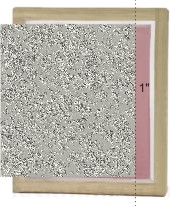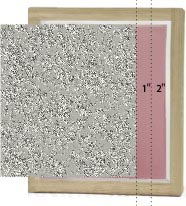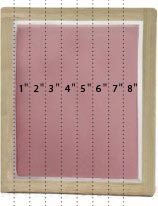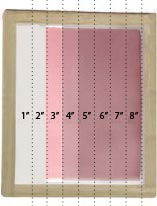
It's easy to determine the optimum exposure time for a system even if you don't have an exposure calculator such as the Stouffer strip. Commercial exposure calculators are neutral density filters that allow specific percentages of the light to pass through so that you get a range of exposures from one experiment. This can be achieved in a less elegant but more practical method.
Take a coated screen and cover all but about an inch with a piece of card, expose for a minute.
You may have a good idea what the exposure should be, you can alter the range given in this tutorial to suit your system.


